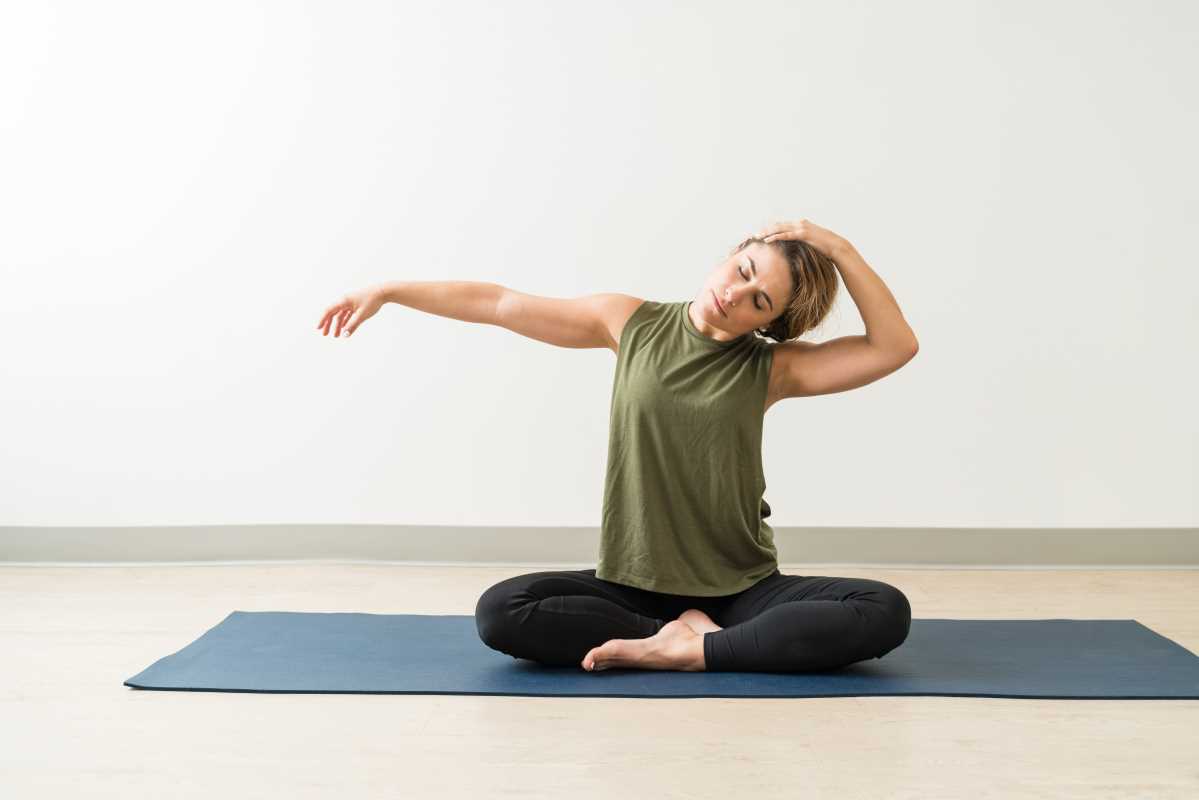Do you feel stiff when you wake up in the morning or after sitting for too long? Stretching might be the answer. It’s often overlooked, but stretching is one of the simplest ways to take care of your body. It doesn’t require fancy equipment or a lot of time, and it comes with a range of physical and mental benefits. Making stretching part of your daily routine can help you feel more flexible, reduce tension, and even boost your mood. But like any new habit, it can be tricky to stick with unless you have a solid plan.
This article will walk you through the benefits of daily stretching, provide tips for building a routine, and share ways to keep that routine enjoyable and sustainable.
Stretching often gets lumped in as an afterthought to workouts, but it deserves a spot on its own. Just a few minutes of daily stretching can make a big difference in how you feel.
The Benefits of Daily Stretching
- Improves Flexibility: Stretching lengthens your muscles, making them more pliable and increasing your range of motion. This flexibility can help you move more easily in your daily life, whether you’re bending to tie your shoes or reaching for something on a high shelf.
- Eases Muscle Tension: If you spend hours sitting at a desk, you’ve probably felt tightness in your back, neck, and hips. Stretching these areas relieves tension and prevents discomfort from becoming chronic pain.
- Boosts Circulation: Stretching helps promote blood flow to your muscles, delivering oxygen and nutrients that support recovery and reduce post-exercise soreness.
- Reduces Stress: Stretching isn’t just physical; it’s a great way to clear your mind and unwind. When combined with deep breathing, stretching can lower stress levels and promote relaxation.
- Supports Better Posture: Over time, habitual stretching can correct muscle imbalances and improve your alignment, helping you sit and stand taller.
No matter your age or fitness level, stretching is a simple yet effective way to invest in your overall well-being.
Tips for Building a Stretching Routine
It’s easy to say, “I should stretch more,” but turning that thought into action requires a plan. Here are practical tips for incorporating stretching into your daily life.
1. Start Small
Don’t feel like you need to devote 30 minutes to stretching right away. Even 5–10 minutes a day can make a noticeable difference. Starting small makes the habit less intimidating and easier to stick with.
2. Pair It With an Existing Routine
One of the best ways to build a habit is to attach it to something you already do. For example:
- Stretch for five minutes right after brushing your teeth in the morning.
- Do a few stretches while the coffee brews or while watching TV in the evening.
- Add stretching as a cooldown after exercise.
3. Use Reminders
Set alarms or use sticky notes to remind yourself to stretch. Over time, it will become second nature, but gentle nudges are helpful when you’re just starting out.
4. Create a Stretching Space
Designate a spot in your home for stretching. It could be a yoga mat in the corner of the living room or a small area near your bed. Having a specific space signals your brain that it’s time to focus on this healthy habit.
5. Make It Convenient
Keep your stretching routine simple and accessible. You don’t need to change into workout clothes or roll out a mat every time. Chair stretches, for example, can be done right at your desk during a quick work break.
6. Follow a Routine You Enjoy
The more enjoyable your stretching session, the more likely you’ll stick with it. Whether it’s a YouTube video, an app, or a printed stretching guide, find a format you look forward to.
Tips for Staying Consistent
Consistency is key to making stretching a habit that lasts. Here’s how to stick with it long term.
1. Set Goals
Establish realistic, achievable goals for your stretching practice. For example:
- Stretch for 5 minutes every day.
- Work on improving flexibility in one specific area, like your hamstrings or shoulders.
- Having clear goals helps you track progress and stay motivated.
2. Track Your Progress
Use a habit tracker or a journal to record your daily stretching. Seeing a streak of completed days can make sticking with the habit more satisfying.
3. Be Flexible (No Pun Intended)
Sometimes life gets hectic, and you might not have time for a full routine. That’s okay! Even a quick 2-minute stretch is better than nothing. Allowing yourself flexibility makes it easier to stay consistent without guilt.
4. Reward Yourself
Celebrate your consistency with small rewards. Treat yourself to new workout gear, a relaxing bath, or your favorite snack after hitting a milestone like stretching daily for a month.
5. Avoid Overdoing It
Stretching should feel good, not painful. Be gentle with your body and focus on progress, not perfection. Overstretching can lead to discomfort or injury, which might derail your routine.
Different Types of Stretches to Try
Adding variety to your stretches keeps your routine interesting and ensures you’re working on different muscle groups. Here are a few to consider.
Static Stretches
These involve holding a position for 15–30 seconds to lengthen and relax the muscle. Examples include:
- Hamstring Stretch: Sit on the floor with one leg extended and the other bent. Reach toward your toes with a straight back.
- Chest Stretch: Stand in a doorway and gently press your hands against the frame to open up your chest.
Dynamic Stretches
These involve movement, making them great for warming up before a workout. Examples include:
- Arm Circles: Rotate your arms in small circles to loosen up your shoulders.
- Leg Swings: Hold onto a sturdy surface and swing one leg forward and backward.
Yoga-Inspired Stretches
Yoga is a fantastic way to combine stretching with relaxation. Try poses like:
- Downward Dog: Stretches the hamstrings, calves, and back.
- Cat-Cow: Loosens the spine and improves mobility.
Office-Friendly Stretches
If you’re stuck at a desk all day, these quick stretches can relieve tension:
- Neck Stretch: Tilt your head toward one shoulder to relieve neck tightness.
- Seated Spinal Twist: While seated, twist your upper body to one side and hold.
Making Stretching Enjoyable
Stretching doesn’t have to feel like a chore. These tips can help you look forward to it.
Play Music
Create a playlist of calming or energizing music to set the mood for your stretching session.
Combine It With Relaxation
Light candles, dim the lights, or use essential oils to create a soothing environment. You might even add stretching to the end of a meditation session for total relaxation.
Stretch With a Friend
Partner up with a friend or family member to stretch together. It’s a fun way to stay accountable and make the practice more social.
Focus on How You Feel
Take time to notice the benefits of stretching. Do you feel less tense? More flexible? Energized? Focusing on the positive effects can keep you motivated.
 (Image via
(Image via





